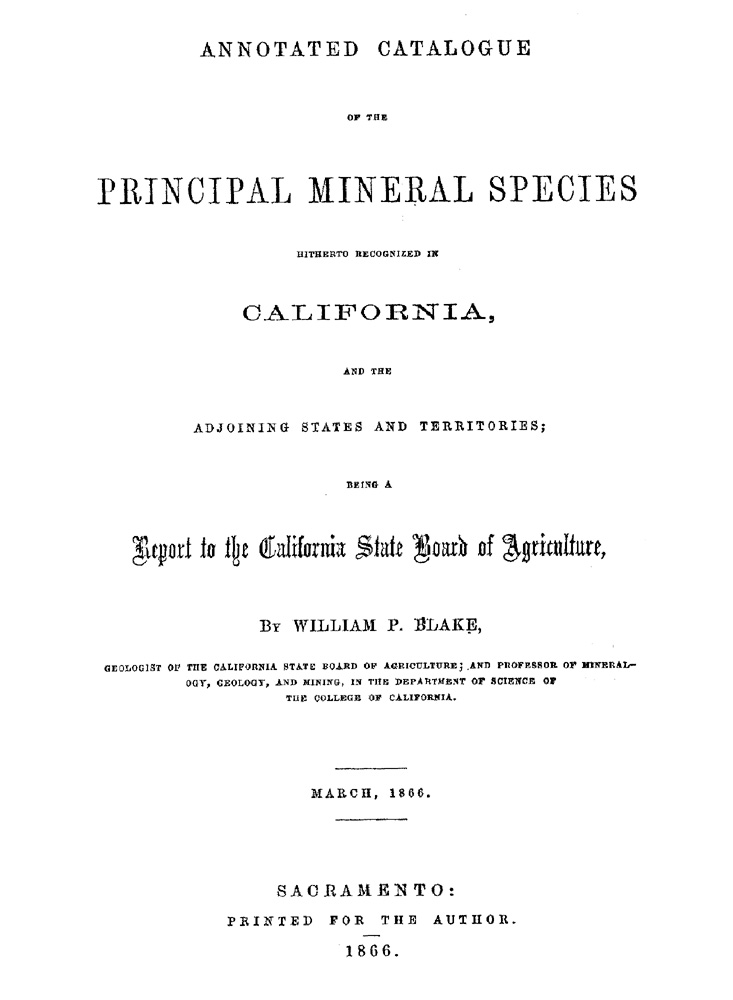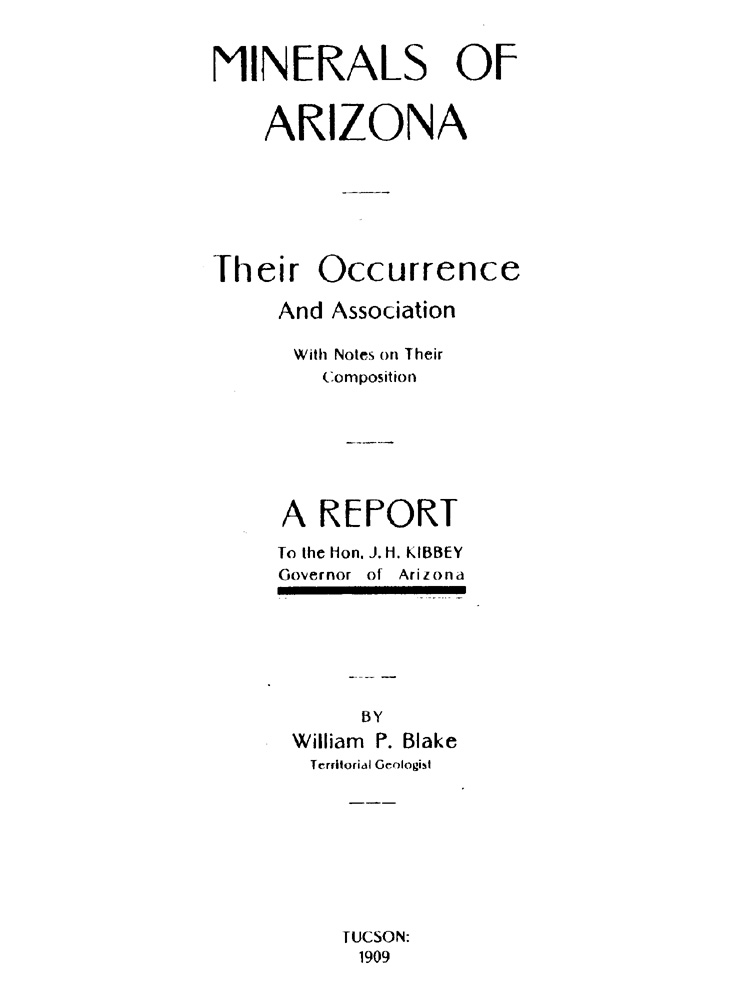BLAKE, William Phipps.
(1826 – 1910)
Blake was educated at Yale (chemistry, Ph.D., 1852) and received an advanced degree from the University of California at Berkeley (LL.D., 1910). From 1852 to 1854, he worked as a chemist for the New Jersey Zinc Company. In 1854, he was appointed geologist for the Pacific Railroad Survey, a post that occupied him until 1856. Blake then became a mining consultant. In this capacity he made an extensive examination of the mineral resources of North Carolina, and founded in 1859, the Mining Magazine, of which he was editor. At the behest of the government, he was among the first foreigners to examine from 1861 to 1863 the mineral resources of Japan. On his return he explored the Stickeen River region of Alaska, and discovered the Stickeen glacier. In 1864, he became state mineralogist for California. From 1895 until 1905, Blake was the professor of geology and mining as well as director of the School of Mines at the University of Arizona. He also took on the added responsibility in 1898 of becoming the territorial mineralogist for Arizona.
Biographical references: ABA: I 134, 334-347; II 51, 116. • American Journal of Science: 4th Series, 30 (1910), 95-6. • American Men of Science, 1st edition (1906). • Bulletin of the Geological Society of America: 22 (1911), 36-47, portrait [by R.W. Raymond]. • DAB. • Dill, D.B., "William Phipps Blake, Yankee gentleman and pioneer geologist of the far east", The Journal of Arizona History, 32, (1991), no. 1, 385-412, 11 illus. • Elliott, Biographical Index, 1990: 22. • Elliott, Biographical Dictionary, 1979: 32. • Keyes, C.B., "William Phipps Blake; pioneer of the southwest", Pan-American Geologist, 72, (1939), no. 1, p. 1-8, portrait. • Mineralogical Magazine: 16 (1911), no. 71, 157 [by L.J. Spencer]. • National Cyclopedia of American Biography: 10, 25. • Sarjeant, Geologists, 1980: 2, 567. • Science: 31 (1910), 853. • WBI. • World Who's Who in Science: 186.

1. English, 1866.
Annotated Catalogue | Of The | Principal Mineral Species | Hitherto Recognized In | California, | And The | Adjoining States And Territories; | Being A | Report to the California State Board of Agriculture, | By William P. Blake, | [...3 lines of titles and memberships...] | [rule] | March, 1866. | [rule] | Sacramento: | Printed For The Author. | [rule] | 1866.
8°: [1]-31, [1] p. Page size: 224 x 140 mm.
Contents: [1-2], Title page, verso blank.; [3], Letter to I.N. Hoag from W.P. Blake, dated 6 March 1866.; [4], Blank.; [5]-6, "Authors And Publications | Upon The | Mineralogy Of California."; [7]-24, Text [=list of mineral species].; [25]-26, "Principal Public And Private | Mineralogical And Geological Collections | In California, | Known To The Author."; [27]-31, "Notes on the Geographical Distribution and Geology | Of The | Precious Metals And Valuable Minerals | On The | Pacific Slope Of The United States."; [1 pg], "Errata."
Very scarce. The first independent list of mineral species found in California. The first section provides a list of 27 earlier references that Blake consulted in the preparation of this work. Following is an alphabetical list of mineral species, which includes locality information. Blake includes a list of the public and private collections of minerals in the state and a short description of where the mineralization occurs.
Bibliographical references: NUC.

2. English, 1909.
Minerals Of | Arizona | [rule] | Their Occurrence | And Association | With Notes on Their | Composition | [rule] | A Report | To the Hon. J.H. Kibbey | Governor of Arizona | [rule] | [rule] | By | William P. Blake | Territorial Geologist | [rule] | Tucson: | 1909.
[1]-64 p. Page size: 214 x 130 mm.
Contents: [1-2], Title page, verso blank.; 3-64, Text [=list of species].
Very scarce. The first independent list of minerals found in the Territory of Arizona. Under each species, the known localities are described. A second part at the end lists the "Materials of Construction," which describes rocks and gravel used in construction.
Bibliographical references: NUC.
.